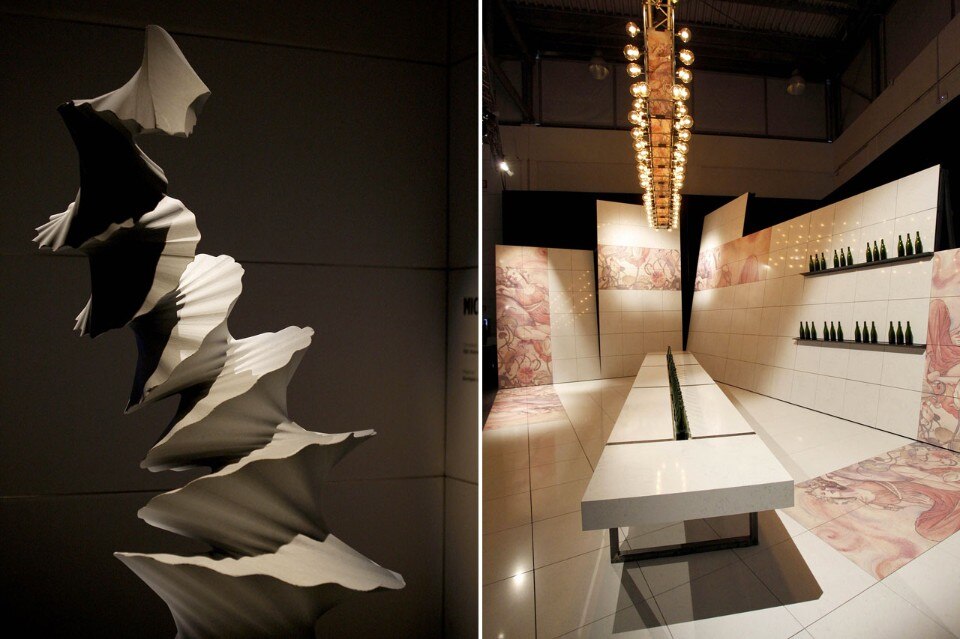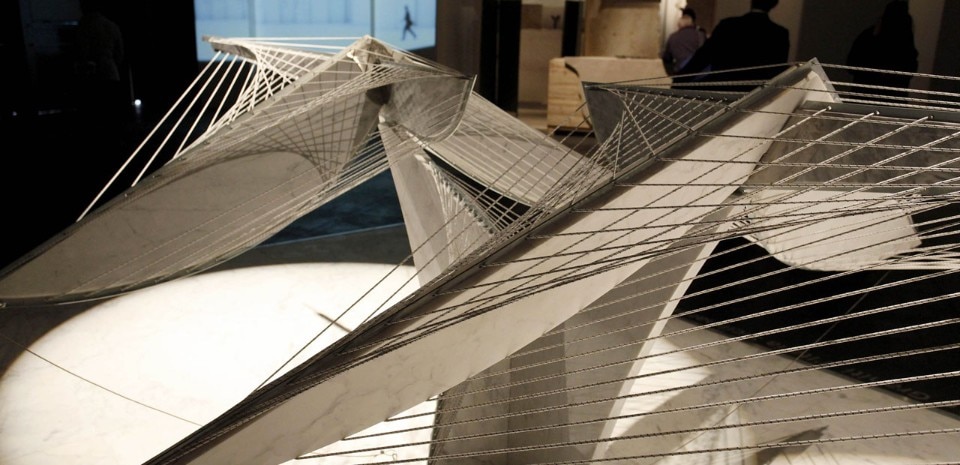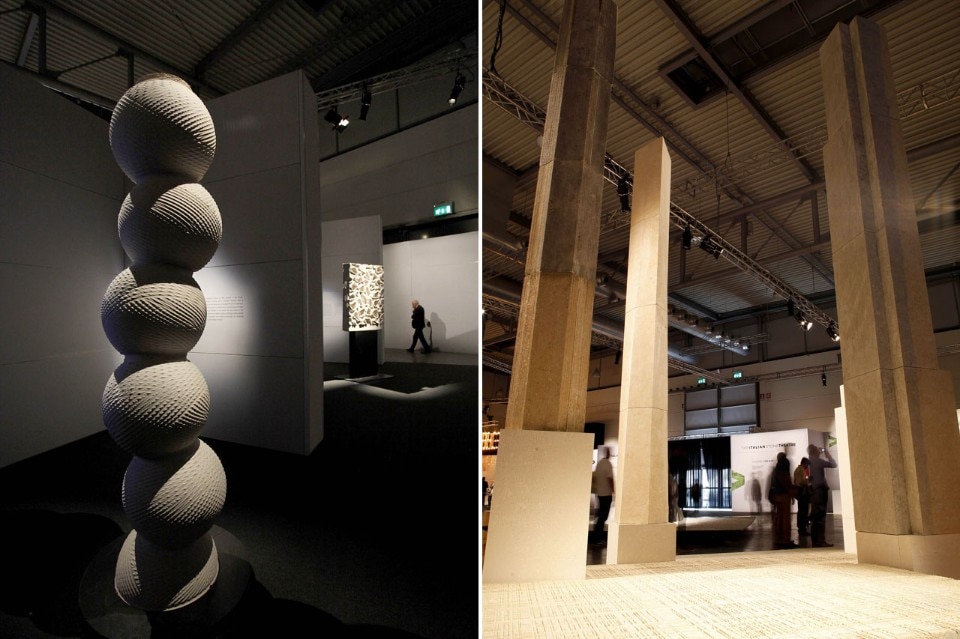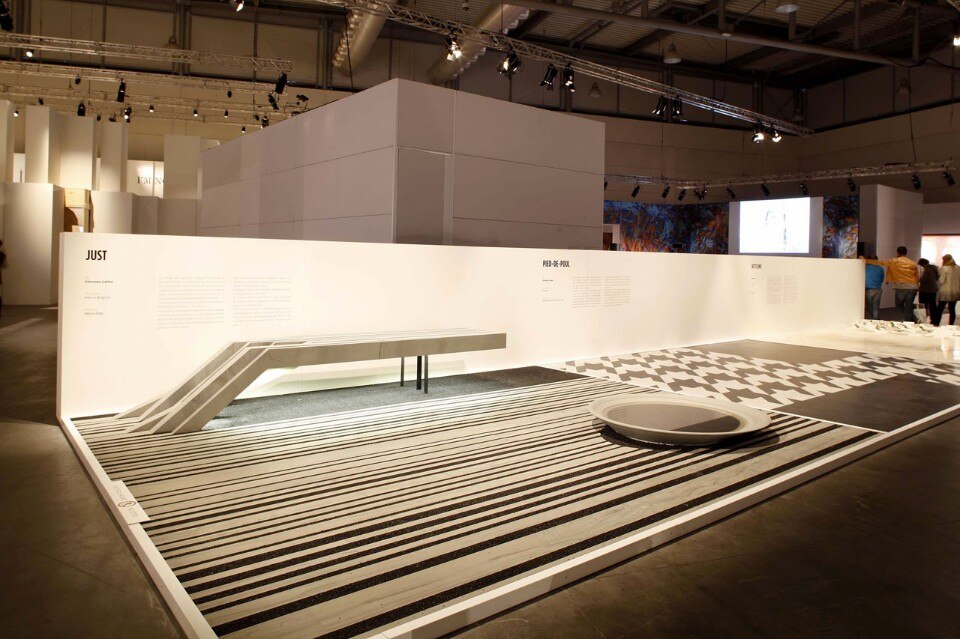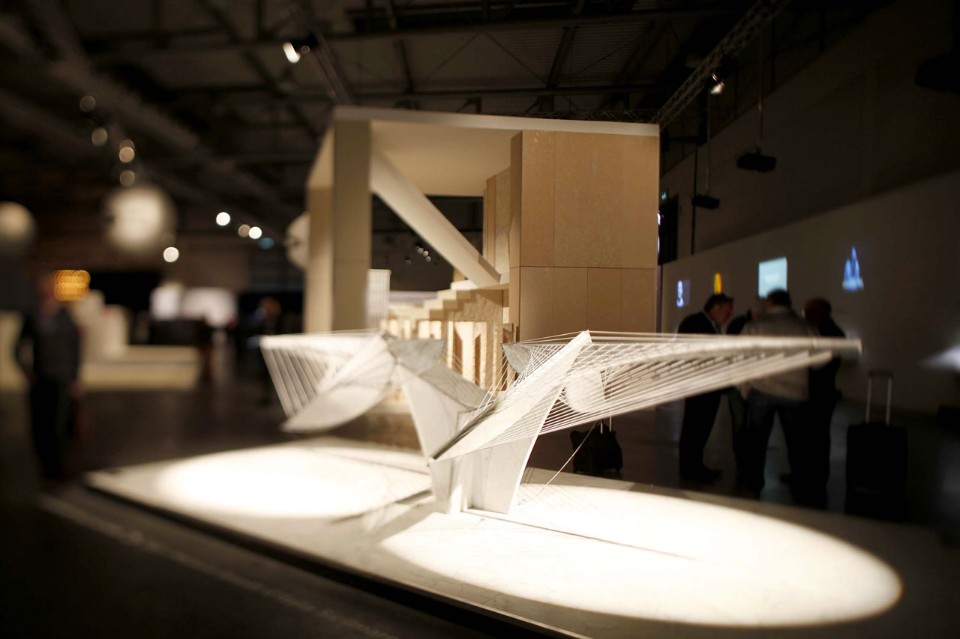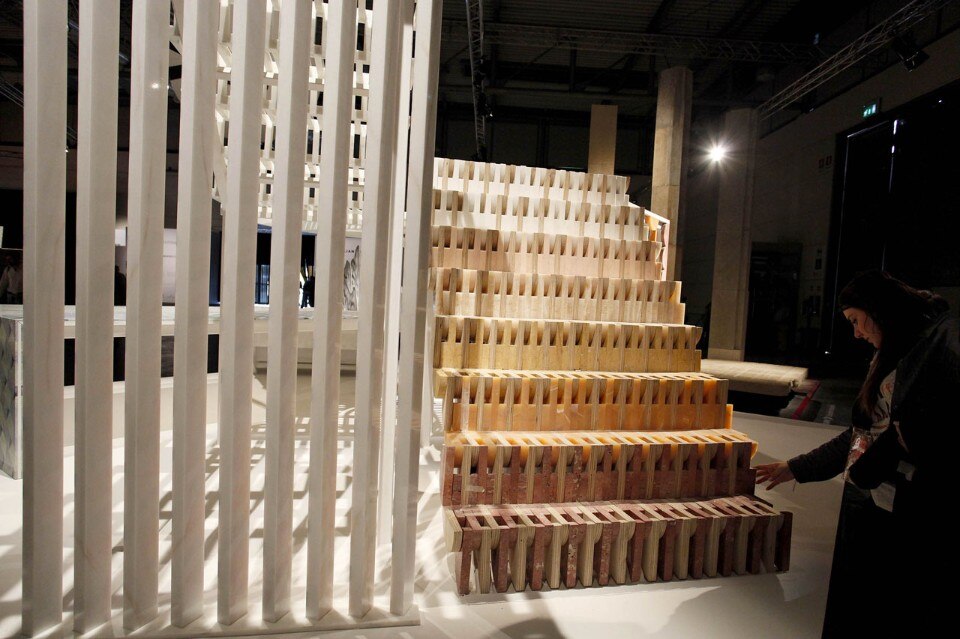
One section is dedicated to materials and involves a series of installations linked by a shared, dual theme inspired by concepts of horizontality and verticality, two conditions in the use of stone materials which designers have to tackle on a daily basis.
Horizontality is interpreted through Carpets of Stone, a collage of stone floors by several designers installed to form a segmented path, where design imagination and executive precision can demonstrate infinite interpretation possibilities and the textural and chromatic facets offered by stone materials in two-dimensional compositions.
Among these is Botticino, a conceptual installation by Gumdesign for I.E.M. that tells the story of marble, from the final shape created by man to the actual form found in nature. Starting in workshops, with processes dedicated to specific inhabited areas, this material is progressively transformed from simple flat slabs into small three-dimensional modules, some of which are designed to receive small plants. Functional and practical, these elements are actual pots that tell the story of a land and its spontaneous complexity. This natural, backward path begins with the processing of 20x20 marble-chip floor tiles in their most elaborate form (ground and polished), then moves back to simple polishing, and finally returns to the original appearance (wire saw) found in quarry blocks.
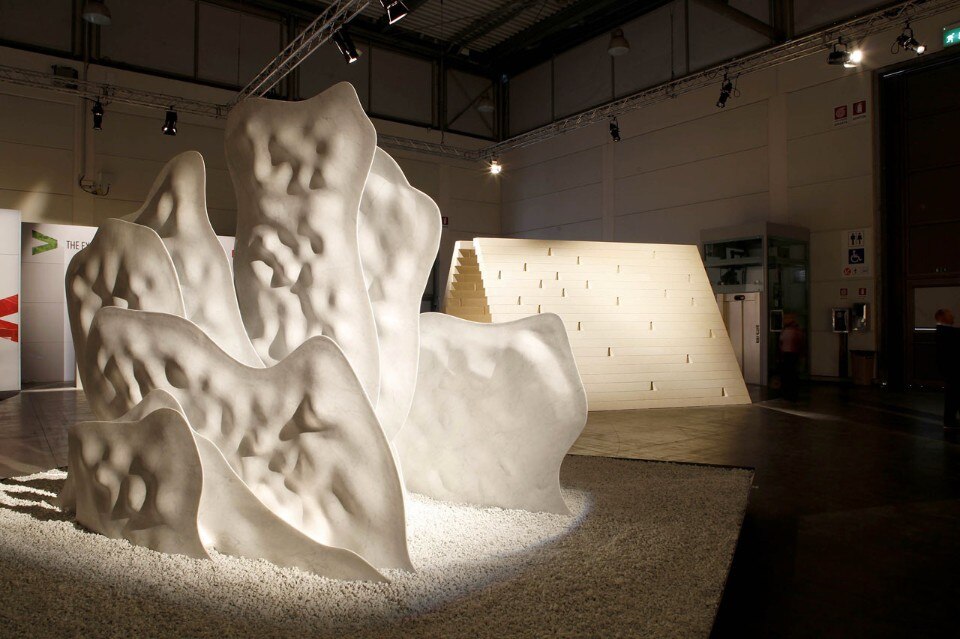
Verticality is represented by Lithic Vertigo, a series of three-dimensional installations conceived as islands where walls, stairs and ramps will highlight the potential of stone, in mechanical terms as well as expressive quality in interpreting architecture through various building components.
Here Erodescape has been designed by Kengo Kuma for Franchi Umberto Marmi with the purpose to change the general concept of thin marble, while being aware of the thickness limits due to stone cutting processes. Thinking about how water and wind manage to erode rocky landscapes, they decided to consider new working processes, such as removal and polishing, to achieve this unique result. Starting with a marble slab, they decided to gently remove some material and shape it as an eroded terrain. As a result, the recesses obtained turned into a fascinating, carved landscape.
Next to Kuma, Cino Zucchi developed for Grassi Pietre the New Karnak installation, that comes in the shape of a slanting stone wedge, with Ivory White Vicenza Stone steps that rise towards a narrow beam of light and are reflected on a polished floor. It aims to stage the “ground zero” of stackable stone construction, and at the same time evoke – through the ambiguous artifice of a scale model – the “new pyramids” of contemporary cities, leaning towards the search for a possible future.
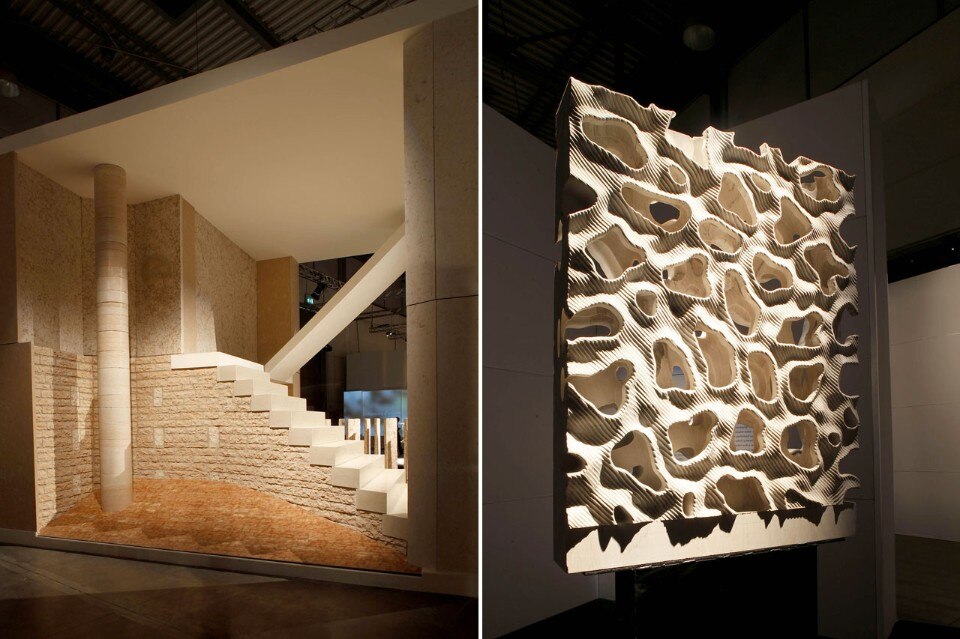
The other exhibition section focuses on the interaction between stone processing machines and design projects, a crucial step that opens new perspectives for a sector which until now has experienced problematic access to the market.
Digital Lithic Design is an event where experimental design exploits digital tools and high-tech equipment to transform and re-launch stone in a new dimension where the machine is a new tool at the disposition of human creativity. A collection of works in marble of impressive formal impact experiments the ability of each cutting and processing technique at extreme levels thanks to the involvement of players in the stone industry, tool manufacturers, software houses, machinery, marble and quarry workers.
The exhibition is a stimulating opportunity for comparisons between these companies and expands the debate about new technology as a competitive lever on the international stone market.
